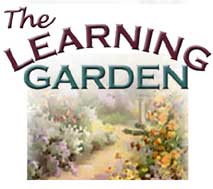
From Seed to Seed:
Plant Science for K-8 Educators
 |
From Seed to Seed: |
|
|
So far in this course we have explored the basics of botany-how plants come to be, grow, thrive, and reproduce. The foundation has, therefore, been laid for you to explore "other" plant topics. For example, this first section focuses on the similarities and differences among plants based on those characteristics to which you were introduced in the first part of this course. IV. Part Two: Exploring Plant Topics A. Diversity: From Mosses to Redwoods Systems for classifying plants From the tiny duckweed, just 1/6 inch across, floating in a pond... to the venerable sequoia, more than 350 feet tall, towering in the ancient forest... From the juniper, gnarled and stunted by the relentless wind on an alpine ridge... to the verdant carpet of moss, cushioning the rocks in a woodland glen... to the saguaro cactus, sentinel of the barren desert... the family of plants includes an almost incomprehensible array of organisms. Plants have evolved diverse forms, sizes, and adaptations in response to their particular needs and the environment in which they live. This variety and diversity has allowed plants to colonize every corner of the earth, from ocean to desert to tundra. In this part of the course, we will take a step back and look at the family of plants as a whole. We'll discuss the amazing diversity among members and then explore how people throughout history have attempted to create order by organizing and classifying plants according to various features. We'll survey the various groupings within the plant kingdom and note similarities and differences among groups. Finally, we'll take a closer look at some plant families of special interest to teachers who use gardening in their teaching endeavors. |
||||
|
Made possible by a grant from Oracle Corp. Copyright 2001, National Gardening
Association, Inc. For questions regarding this web site, contact Webmaster |